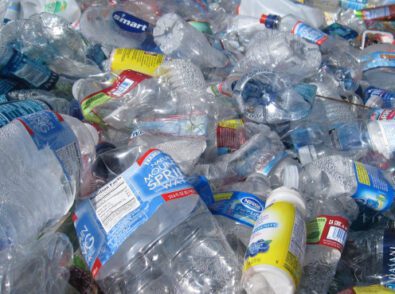What Are PFAs?

Per- and polyfluorinated substances, also known as PFAS, are found in many everyday household products, including furniture, clothing, non-stick cooking utensils and pans, food packaging, adhesives, electrical wire insulation, and more.
Over 9,000 chemicals fall under the heading of PFAS. They have been widely used in industrial and consumer settings since the 1950s.
PFAS are used to coat products to make them water, heat, grease, oil, and stain-resistant. The problem is that they don’t easily break down. When products coated with PFAS end up in landfills, they can contaminate waterways and bioaccumulate in the fish and wildlife that depend on them.
Research is ongoing to understand better how PFAS exposure affects humans, but its impact on animals is well-known. Thyroid function, liver function, reproduction, and immunity are just a few of the areas of concern. Based on these observations, it can be concluded that PFAS pose a significant risk to the human immune system and elevate the risk of kidney and liver disease, increased cholesterol levels, and various concerns for pregnant and lactating women.
People consume PFAS by drinking contaminated water and eating fish or animals that have consumed PFAS. Humans can also be exposed to them by using or wearing coated products. Considering how many products use PFAS, avoiding exposure would be difficult. Fortunately, measures are in place to remove them from drinking water (especially), thus reducing excessive exposure.
Chemical Composition of PFAS
PFAS are a family of substances. In the past, they were grouped under either perfluorinated chemicals or perfluorocarbons. The latter term is also known as greenhouse gases.
Today, we refer to the entire family as PFAS, which includes both per- and polyfluoroalkyl substances. The common factor in all PFAS is a chain of carbon atoms bound to fluorine atoms. This core structure creates a powerful bond, which prevents it from degrading efficiently in the environment.
The EPA has since issued amended health advisories for perfluorooctanoic acid (PFOA) and perfluorooctane sulfonic acid (PFOS). New findings have demonstrated adverse health outcomes when these substances are present at very low concentrations.
PFAS Regulation in the US
In 2022, the Biden-Harris administration announced a plan to replace lead pipes throughout the US to ensure clean drinking water for all citizens. Subsequently, the project was amended to include protection from PFAS, referred to as “forever chemicals” because they accumulate in the body, pose a severe health threat to all people, and disproportionately affect low-income and marginalized communities.
The EPA has established a strategic roadmap to inform action against PFAS through 2024, aimed at taking steps to safeguard communities and hopefully providing a basis to build upon when establishing more permanent solutions, restrictions, and controls.
Some of the chemicals that fall under the PFAS heading have not been used for many years, which presents an opportunity to restrict significant new uses of those substances and compel manufacturers to enter a more rigorous product safety and approval process.
Initiatives will include a “more robust” review process for new PFAS entering the market and a review of previous decisions.
The federal government has also earmarked $10 billion in funding specifically for communities disproportionately affected by PFAS contamination in their drinking water to improve infrastructure, implement water quality testing, train contractors, and implement treatment technologies and equipment.
Some of the highlights of the president’s plan to combat PFAS include the following:
- Nationwide monitoring of drinking water for PFAS
- Monitor and restrict PFAS discharges at the (industrial) source
- Issuance of a national drinking water standard
- Making public water quality tests downstream of military facilities
- Expanded FDA testing for PFAS in the food supply
- Eliminating the release of substances that contain PFAS (like firefighting foam) for testing purposes
- Holding PFAS polluters accountable
Although we can’t expect these initiatives to eliminate PFAS entirely, awareness leads to widespread, enforceable solutions that may protect many lives.
Most Common PFAS
Over the years, many PFAS have been phased out and are no longer used in commercial products. However, because of the enduring nature of PFAS, it is still present in the environment, such as in firefighting foam residue from past disasters.
Products that contain PFAS include:
- Any waterproof or water-resistant fabrics and products (tents, raincoats, umbrellas)
- Stain or water-repellent treatments for carpeting, upholstery, etc.
- Personal care products (shampoo, dental floss, cosmetics, nail polish)
- Cleaning products
- Non-stick cookware
- Grease-resistant paper and packaging
- Ski wax
People can become exposed to PFAS by drinking contaminated water, eating fish with high PFAS levels, eating food raised or grown in an area close to manufacturing plants that use or make PFAS (past or present), eating food packaged in materials that contain PFAS, or using products (see list above) that contain PFAS.
While avoiding all of the above might not be possible, awareness may inform your buying choices.
PFAS Contamination in the U.S. (June 8, 2022)
Image Source: ewg.org
How to Reduce PFA Consumption
Most water treatments are ineffective at removing PFAS at the source. The EPA, however, has identified a few effective methods of removing some PFAS from drinking water.
High-Pressure Membranes
High-pressure membrane treatments include reverse osmosis (RO) and nanofiltration. RO is often considered the most effective because it removes all contaminants. However, both have merits and limitations. It’s generally accepted that this method is well-suited to residential applications as about 20% of the feed flow (incoming water) must be disposed of as waste, so likely not a viable strategy at scale.
Activated Carbon
Granular activated carbon (GAC) is made from wood, coal, and lignite. It has proven highly effective in removing PFAS from drinking water through adsorption. Combined with other types of filters, it can be 100% effective in removing PFAS.
Ion Exchange
Anion exchange treatment, also known as resin, is another way to treat contaminated water. There are two types of resin: cationic, which removes positively charged contaminants, and anionic, which removes negatively charged contaminants. The duration for which PFAS removal is effective depends on factors such as the type of resin, flow rate, level of organic matter, and other contaminants.
Looking for ways to reduce your PFAS exposure? Look for PFAS-free products, like Greenprint compostable products.
References
- https://www.epa.gov/pfas/pfas-explained
- https://www.cdc.gov/niosh/topics/pfas/default.html
- https://www.niehs.nih.gov/health/topics/agents/pfc/index.cfm
- https://www.sciencedirect.com/topics/chemistry/bioaccumulation
- https://www.atsdr.cdc.gov/pfas/health-effects/index.html
- https://www.epa.gov/sciencematters/reducing-pfas-drinking-water-treatment-technologies
- https://www.atsdr.cdc.gov/pfas/docs/PFAS_FamilyTree_EnvHealthPro-508.pdf
- https://www.epa.gov/system/files/documents/2021-10/pfas-roadmap_final-508.pdf
- https://www.whitehouse.gov/briefing-room/statements-releases/2022/06/15/fact-sheet-biden-harris-administration-combatting-pfas-pollution-to-safeguard-clean-drinking-water-for-all-americans/
- https://www.epa.gov/system/files/documents/2022-04/npdes_pfas-memo.pdf
- https://www.atsdr.cdc.gov/pfas/health-effects/exposure.html?CDC_AA_refVal=https%3A%2F%2Fwww.atsdr.cdc.gov%2Fpfas%2Fpfas-exposure.html
- https://www.ewg.org/interactive-maps/pfas_contamination/map/
- https://www.epa.gov/sites/default/files/2019-10/documents/pfas_drinking_water_treatment_technology_options_fact_sheet_04182019.pdf





